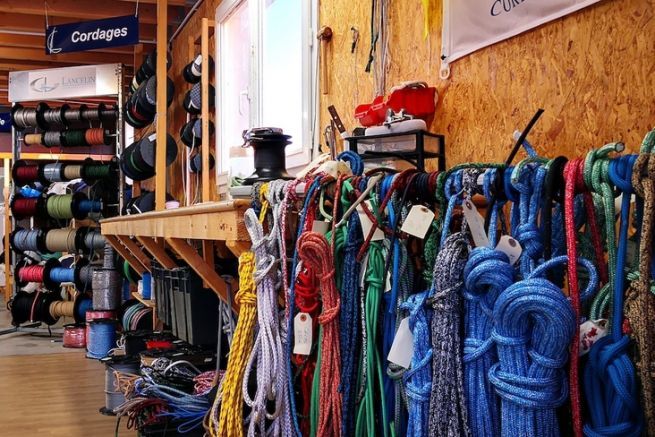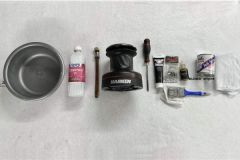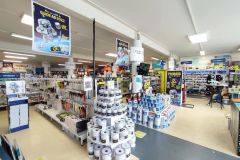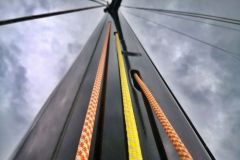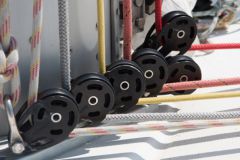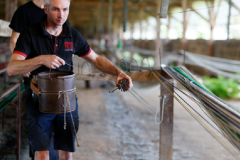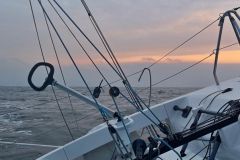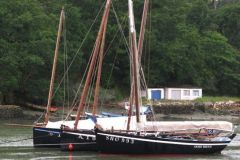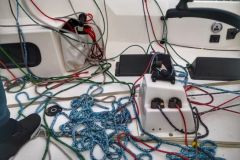Main and genoa halyard
These two halyards must have excellent mechanical qualities, otherwise the sails will be irreparably damaged when the wind forces them.
Essential: Very low elongation and high breaking strength to keep the halyard trim when the wind increases while allowing the diameter to be reduced
Complementary: Lightness is also sought after in order to limit the weight in the tops and thus gain stability.
Choice of materials : Dyneema core for its mechanical qualities protected by a continuous polyester fibre braided sheath. A high number of spindles (24 or 32) improves the holding power in the blocker.
Optional: a Dyneema sheath can be added at the mast sheave to limit abrasion due to raking. A Technora (Aramide) sheath can be added when the blocker passes through, its coefficient of friction combined with the increase in diameter (thanks to the sheathing) will keep the halyard perfectly in its blocker.
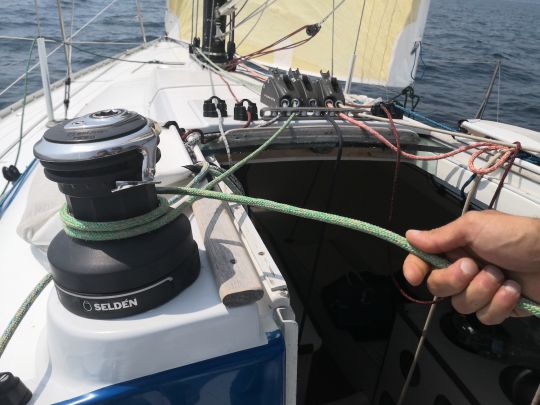
Spinnaker halyard
Essential: The high breaking strength is crucial, as the spinnaker can pull really hard in certain circumstances such as loading. For a high performance boat, elongation is important, but for cruising it is not as necessary as for the other 2 halyards.
Complementary: Once again, the lightness will reduce the weight of the rigging, which promotes stability and therefore comfort as well as performance.
Choice of materials : On small boats, polyester will do the job as long as you don't go too far down in diameter. However, most of the time, it's better to use Dyneema, which doesn't stretch very much and can withstand the peak loads of the spinnaker in the halyard.
Optional: A Dyneema sheath will be welcome to protect the halyard from the risk of chafing. A Technora (Aramide) sheath can be fitted at the blocker to ensure the halyard stays in the blocker.
Mainsail sheet
Essential: For a mainsail hoist, it is the grip and ergonomics of the rope that will define the choice rather than the breaking strength. For a mainsheet coming back to the winch, low elongation and high breaking strength are essential.
Choice of materials : For a hoist, choose a polyester core with a braided sheath of discontinuous polyester fibre for better comfort. For a sheet on a winch, you will have to use a Dyneema core with a polyester sheath.
Optional: For the hoists, there are unique polyester braids that offer the best comfort for the hands. For winch sheet adjustments, you can choose a hi-tech sheath combining polyester fibre (colour) and Technora (black) to resist winch abrasion.
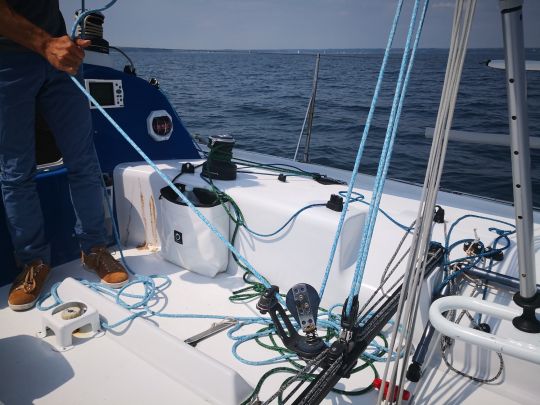
Genoa listening
Essential: Low elongation and high tensile strength and good grip are essential.
Choice of materials : On small cruising boats, a polyester sheet will be sufficient as long as its diameter remains reasonable. For heavier or more powerful boats, choose a Dyneema core sheet and a polyester sheath.
Optional: we can seriously look at high-end sheaths that combine aramid fibers (Technora) with polyester to best resist winch abrasion.
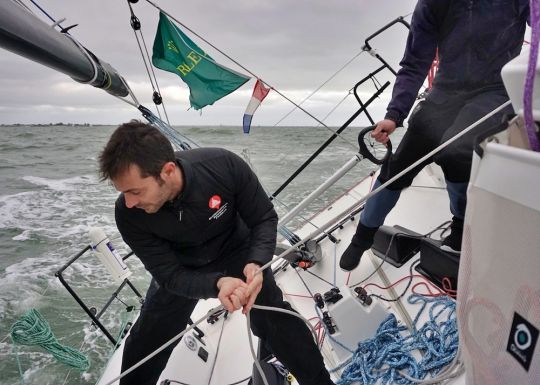
Spinnaker listening
Essential: lightness, especially in light weather, and good grip for the comfort of the gearboxes.
Complementary: Low elongation and good tensile strength. Floating sheets are an excellent option as they do not add extra weight due to moisture absorption.
Choice of materials : The mechanical qualities of Dyneema are ideal for spinnaker sheets and a polyester sheath should be chosen. For the most powerful boats, an aramid/polyester sheath should be used, as the latter will readily melt on the winch when the spinnaker is shocked under high loads.
Optional: The part of the sheet that never passes around the winch can be unsheathed, making the sheet even lighter and reducing water absorption.
Symmetrical spinnaker arm and asymmetrical spinnaker tack
Essential: Very low elongation and high tensile strength are essential.
Choice of materials : Even on a small sailboat, one will go for a tip with a polyester-sheathed Dyneema core.
Optional: It is advisable to protect the end of the rake with a Dyneema sheath to resist abrasion of the spinnaker pole or bowsprit.
Adjustment maneuvers
Essential: Most of the adjustment operations are done by hand and therefore under reasonable loads. For example, all-polyester ends are generally acceptable.
Complementary: When you shoot by hand, you're interested in comfort. Diameter 6 is probably the minimum to avoid hand shearing. We will choose polyester staple fibre sheaths for the pleasant grip they provide.
Choice of materials : Polyester is an excellent choice for low load applications.
